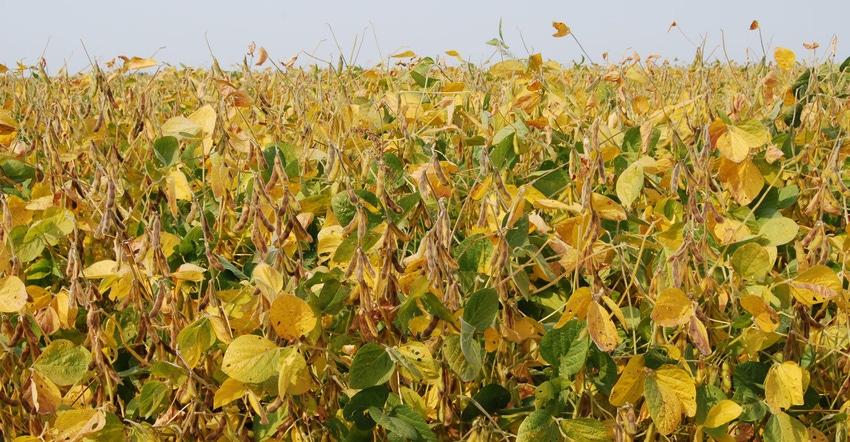
How fast do soybeans dry down during the preharvest period? To get a better answer to that question, Iowa State University scientists conducted an in-the-field study in central Iowa. They looked at how projected soybean drydown can help farmers schedule their harvest plans.
Soybean fields this fall are maturing across Iowa with minimal delay compared to 2016, when maturity was slower due to cool temperatures, notes ISU Extension agronomist Mark Licht. However, he says you need to keep in mind that soybeans are sensitive to day length. And that sensitivity speeds up the crop’s development toward physiological maturity.
Licht, along with ISU colleague Sotirios Archontoulis, an assistant professor of integrated cropping systems in the department of agronomy at ISU, provide the following information and observations.
How to measure soybean drydown rate
During this time as soybeans are maturing for harvest, senescence or leaf drop is occurring and carbohydrates are being converted to oils in the seeds in the pods. Soybean seed moisture changes very little and remains near 60% during the degreening period. As the pods turn to a mature color at the beginning of maturity stage (R7), seed dry matter accumulation is complete and seed moisture rapidly decreases.
To quantify the rate of soybean drydown (percent of seed moisture decrease per day until it reaches a constant seed moisture) and to investigate how planting date and maturity group affect the drydown rate, ISU researchers conducted a field experiment recently near Ames in central Iowa. The experiment had four planting dates and four maturity groups over three years.

DRYING DOWN: Average seed moisture drydown (blue line) across four soybean varieties representing a range of maturity groups at four planting dates from 2014 to 2016 at Ames. Horizontal dashed line represents 13% grain moisture, open circles are actual data.

For this data set, soybean pods were collected to determine soybean grain moisture from September through October. The data analysis indicated that soybean drydown rate is affected by maturity group selection, planting date and year.
Soybean drydown faster than corn
During the first 12 days following maturity, the average drydown rate was 3.2% per day, which is about five times faster than that of corn. After that period, the drydown rate significantly slows down or stops completely, stabilizing at about 13% moisture content.
Soybean seeds are prone to take up moisture from the atmosphere under cold and humid conditions, which can delay drydown. Additionally, in conditions where the atmosphere has a high vapor pressure deficit — warm temperatures with low humidity — soybean grain drydown can reach 9% to 10% grain moisture.
Paying attention to when the soybean crop reaches maturity can help farmers schedule harvest activities. Under average weather conditions, soybeans will reach 13% moisture in about 12 days following maturity. However, if weather conditions are conducive, grain drydown can be achieved in as early as nine days after maturity.
About the Author(s)
You May Also Like




